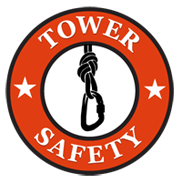Wireless Safety Standards-OSHA, ANSI, TIA, NWSA: A thousand ways to create a thousand standards.
 It’s important for tower climbers to follow safety standards, regulations and rulings to stay safe. The wireless industry is consistently creating rules and regulations, but are we creating too many? As the training Director of Tower Safety and Instruction and the person responsible for educating to the standards, the amount of regulations is overwhelming at times for the student. The new ANSI 10.48 standards were recently released and they are quoting rigging descriptions different than TIA 1019. Several other regulation changes are also causing confusion. The discontinued NATE CTS program followed the ANSI z359 and z490 standards, but created a new name for standards in existence. The new NWSA (National Wireless Safety Alliance) perhaps will create quality standards for the TTT 1 and TTT 2. However, if professionals have been doing audits or inspections for many years, whose quality standards have we been inspecting to? AT&T has a 502-quality standard, so are we all indirectly following them? What about all the antennas and RRH manufacturers: is there a uniformed installation standard they adhere too or is everyone different? It’s certainly a lot to keep track of to insure the correct procedures are being followed.
It’s important for tower climbers to follow safety standards, regulations and rulings to stay safe. The wireless industry is consistently creating rules and regulations, but are we creating too many? As the training Director of Tower Safety and Instruction and the person responsible for educating to the standards, the amount of regulations is overwhelming at times for the student. The new ANSI 10.48 standards were recently released and they are quoting rigging descriptions different than TIA 1019. Several other regulation changes are also causing confusion. The discontinued NATE CTS program followed the ANSI z359 and z490 standards, but created a new name for standards in existence. The new NWSA (National Wireless Safety Alliance) perhaps will create quality standards for the TTT 1 and TTT 2. However, if professionals have been doing audits or inspections for many years, whose quality standards have we been inspecting to? AT&T has a 502-quality standard, so are we all indirectly following them? What about all the antennas and RRH manufacturers: is there a uniformed installation standard they adhere too or is everyone different? It’s certainly a lot to keep track of to insure the correct procedures are being followed.
We ask these questions because our students indirectly challenge us while we question their understanding about standards. They start asking questions like “this is not what the turf vendor approves” and “we are being told the tower owners said no more to that equipment” and “we can’t climb with this piece of equipment”. How is an educational facility able to keep up with the internal interpretation of the rules pertaining to tower owners, turf vendors and government rules and regulations? Our goal at TelTech is to prepare students for a career in the telecommunications industry through our Telecommunications Tower Technician course and our Qualified Drone Operator Course. To make sure we’re providing the best education possible, we are constantly seeking to improve our offerings to provide the ideal educational experience. These changing standards and regulations can cause inconsistencies in instruction; something we want to avoid.
And then you have the disclaimers:
Although adoption of this instruction is not required, states are expected to have standards, enforcement policies and procedures, which are at least as effective as those of Federal OSHA. States may accept employer compliance with the industry guidelines contained in this instruction as providing the necessary protection for worker access during tower erection. Clearly our industry keeps updating standards and regulations to increase the safety of the climber, but this may also have the unintended consequence of causing confusion.
As telecommunication experts, we wanted to take a step back and offer our insights. Here is our solution: mathematics in rigging will never change, but the education and quality of instruction needs to be accurate for understanding the skills required of the student. We recently created WRAT (Wireless Rope Access Technician), not to confuse, but to add the value of rope access skills to training overall. Keep things simple. These rope access skills have been around since the Egyptians created the pyramids. IRATA and SPRAT have thousands of members due to not creating the wheel, but learning it! Wireless Rope Access skills must be a requirement for this industry; ANSI z359 already exists and we can benefit from those standards. Ultimately the safety, installation and responsibility goes to the tower climber, and they are the ones that hold all the burden. Let’s help them! Let’s all come together as an industry of professionals that put safety first, and streamline our standards and regulations for the benefit of everyone.







